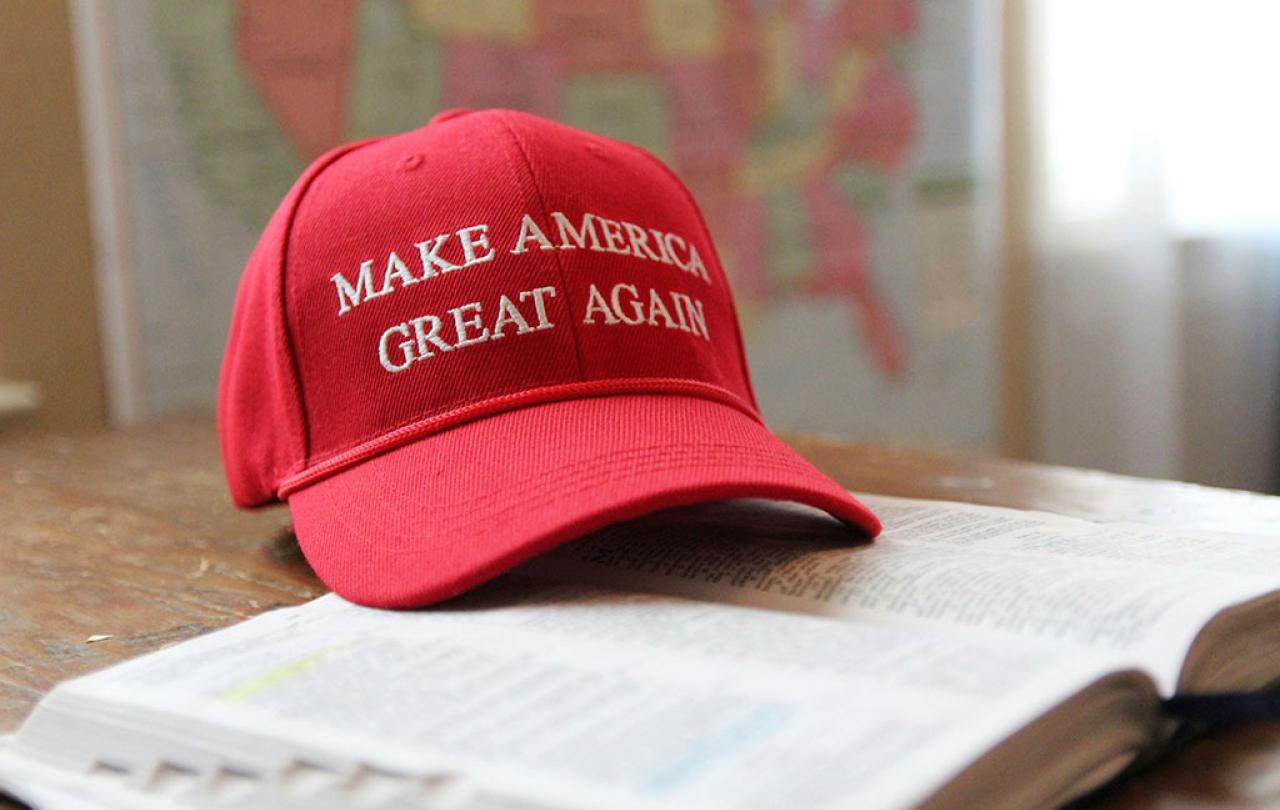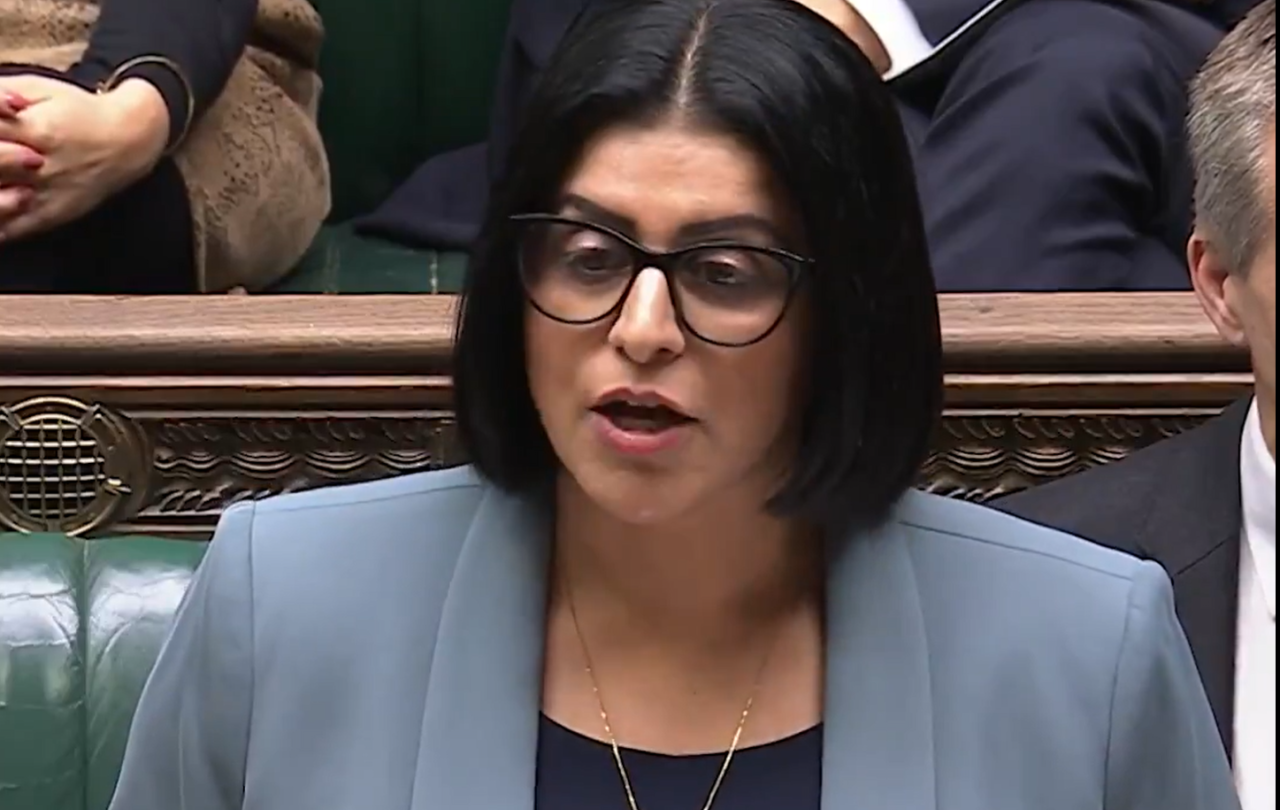
“Ten years is a long time in the life of every human being.” So begins Dietrich Bonhoeffer’s essay, After Ten Years. For him, the decade in question was 1933 to 1943. The place, Germany.
The original essay, penned to mark the new year of 1943, reflects on the tenth anniversary of Hitler’s ascendancy to power through democratic machinery. The piece was sent to an inner circle of Bonhoeffer’s friends. “Are we still of any use?” asks Bonhoeffer. There’s a question I can relate to.
And so, I’ve returned to these modest words again and again these last few years. They’re prophetic, a jolt of honesty born of resilient hope. Not unlike Martin Luther King Jr.’s Letter from a Birmingham Jail, both could be modern epistles.
Their prophetic edge is clearer with eyes on our own situation. 2024 is not 1968 or 1933. As an American citizen, we have our own “decade” to reflect on in the United States. And that is the decade of MAGA, or “Make America Great Again.”
What began as a slogan became a cause which gave rise to a community.
Just 10 years ago, Trump wasn’t sitting in courtrooms. Back then, he stood on a stage to address the Conservative Political Action Conference. He wasn’t a candidate, but a businessman, reality TV star, and disrupter of status quo.
It was at that 2014 meeting Trump uttered that now ubiquitous slogan. Near the end of the speech, less rambling and sharper than his stream-of-consciousness rallies today, the line appears, “we need to make America great again.”
Trump wasn’t the first to use it, that was Reagan in 1980. Then, like now, it evoked a sense of nostalgia, of “good old days” that never were. But nostalgia is powerful, primal. It allows us to persist in the illusion that, for example, the social order of Jim Crow America was somehow more moral and upstanding than our present situation. As if lynchings, mob violence, and political inequality vanish in the mists of our longings. This is and can only be the imagination of white supremacy.
Trump didn’t invent the slogan, but perhaps he was the first to tap into its deepest lode in the bedrock. What began as a slogan became a cause which gave rise to a community. Now, “MAGA” is its own qualifier. We have “MAGA Republicans” and “MAGA Rallies” of the “MAGA faithful.”
Today, we ought to learn that we are simply not tweeting or posting our way out of this.
And where have churches been in these days? Hans Ulrich calls the church a “place of reversal” a place where rogue creeds and words ought to be emptied of their power, where a different public is constituted around the wine, bread, and water. But the lines of MAGA are drawn straight through our churches in America.
Caleb Campbell pastors in Phoenix, Arizona. I asked him recently his thoughts on the impending election, and how it would affect his church. Most churches have already been sorted, he told me. In 2020, churches fractured from within, torn from the pandemic, protests, and the Presidency. But now, there has been a sorting, and settling. The partisan lines, those borders the church is empowered to transgress, are sadly reinforced.
The lasting power of “Make America Great Again” over the last decade is significant. Among practicing Christians, the story we tell about America in our churches has theological consequences. And every church tells this story, implicitly or explicitly, in speech or in silence. And rather than emptying the rogue creed “Make America Great Again” it would seem that in and among many churches across America, it has been given an ample charge of theological authority.
MAGA trades in all the elements of a seemingly eradicated virus called fascism. A mythic past, demographic anxiety, authoritarian rule, all elements converging and colliding in American life. And curiously, the one thing that gives fascism its strength is a failure to remember.
And perhaps this is why Bonhoeffer’s letter, read on the rising tide of anti-democratic platforms, speaks so directly to us. It holds space for a necessary exercise of remembering.
“Who stands firm?” Bonhoeffer asks in the wake of Hitler’s ascendancy. Even the Confessing Church, organized to resist the Nazification of the German evangelical church, soon folded. Pastors either took the oath of loyalty, or enlisted. Time had proved how most attempts to stand firm in the Third Reich had collapsed in on themselves. Such failures mark our day, too.
Bonhoeffer answers his own question in a way that is instructive for us. He surveys all the failed responses to Hitler’s rise. For example, there’s the “reasonable ones” who simply think better answers and clearer communication win the day. Today, we ought to learn that we are simply not tweeting or posting our way out of this. Even more stalwart, institutional efforts fail here. In the torrent of raw information sewage flowing with conspiracies, algorithms, and slogans, reason isn’t enough.
Private virtue “closes its eyes to injustice” and scrolls its own virtue signaling posts with smug self-satisfaction.
There’s the ethical fanatic, who tries to “meet the power of evil with purity of principle.” Many in days like ours are earnest in their convictions, but white-knuckling principles is satisfied not with responsibility but with keeping to some arbitrary vision of integrity that prizes its artificiality, confusing the arbitrary refusal to cede principles with responsible action. There’s those of conscience who, Bonhoeffer notes, can never know the difference between a bad conscience (which can be strong) or a deceived conscience.
The path of duty seems attractive, until we recognize that “just following orders” is the justification of every functionary in Trump’s MAGA machine. And of course, freedom, which can side with the wrong to prevent the worst and so lose its own solid footing. When all else fails, Bonhoeffer holds out private virtue as that last course of action. Not to be confused with monastic retreat, private virtue “closes its eyes to injustice” and scrolls its own virtue signaling posts with smug self-satisfaction.
If all these routes are taken off the table, we find ourselves in position to recognize a bitter truth: we’ve made resisting Trump a good business. Good for convincing stakeholders to fund new ventures, good for justifying ourselves as a moral opposition. After 10 years of MAGA, it’s true that we have assumed much about democracy that can only be realized by vigilance.
Our democracy is a spectacle, not a process. It is an oligarchy of represented interests, not a democracy of representatives. And Trump? The ethos of greatness has always been tied to the former, not the latter. And it is in this situation, not uncommon throughout history, but novel for us who face it, that we can receive the question, “who stands firm?” Bonhoeffer’s question resounds.
If the resistance of reason, principles, duty, or virtue fail, then what? Bonhoeffer’s insistence is that responsible action is “nothing but an answer to God’s question and call.”
Does this mean only Christians can save the world? That Christians are inherently “better” or “righteous” in politics? No. But ten years of MAGA would seem to suggest that this belief continues to animate the evangelical political machine. This is not Christendom; living “in answer to God’s question” means that Christians, simply by virtue of the story we confess and participate in, point to the One who saves.
The singular answer Christians give, of a witness to God’s call, is a window into the story in which the world may find its salvation and hope. Logics of inclusion and exclusion are shattered in the event of reconciliation. There’s a politics in these wider horizons that can heal the bitter contempt that marks our present situation. And sure, Bonhoeffer’s conclusion may strike some as trite sentimentality, of veiled Christian piety that belongs anywhere but politics or the public square. But that’s precisely it.
The Christian story creates a public with its own politics. And this doesn’t mean the church is a counter-society, set up against the world, rather, it is precisely in our participating with fellow citizens in the mess of political process where such a witness can be given and made. There is a free responsibility to this presence. This is not Christian dominance, Christendom 2.0, or MAGA visions of authoritarian power dressed up in Christian rhetoric. This is something more modest, and yet deeply radical.
A decade of MAGA ought to have taught many of us much more than we currently know. And such learning can only happen once we stop incentivizing and normalizing assaults on democratic machinery that come to us as a spectacle for our consumptive entertainment. There remains a way to stand firm, a way that resists necessities and immediacies, primarily because it has the audacity to confess the truth that the world is already reconciled, it just doesn’t know it yet. And nowhere is this ignorance more concentrated than in the retributive, ascendant vision contained in the phrase, “Make America Great Again.”





